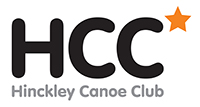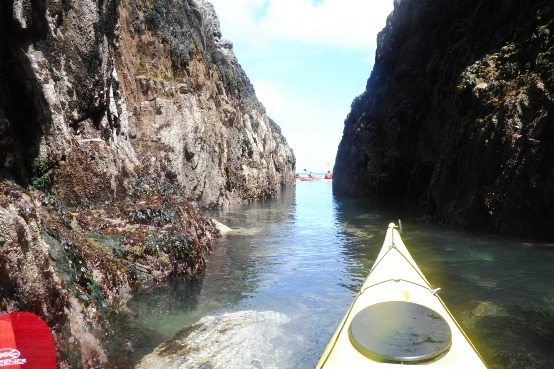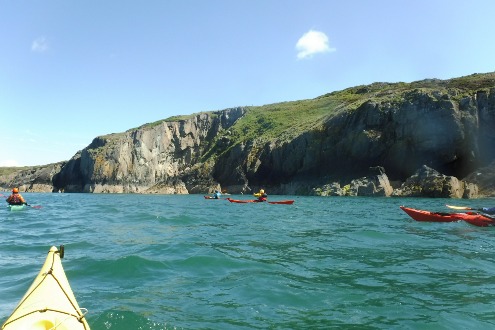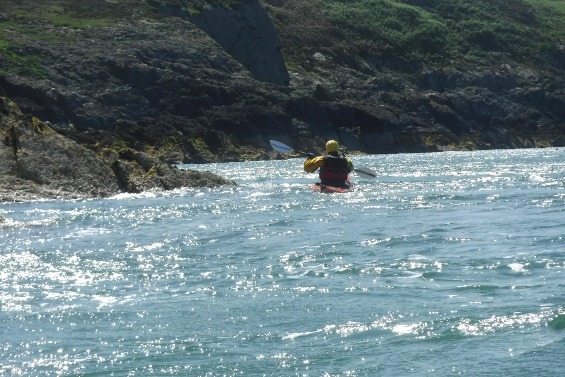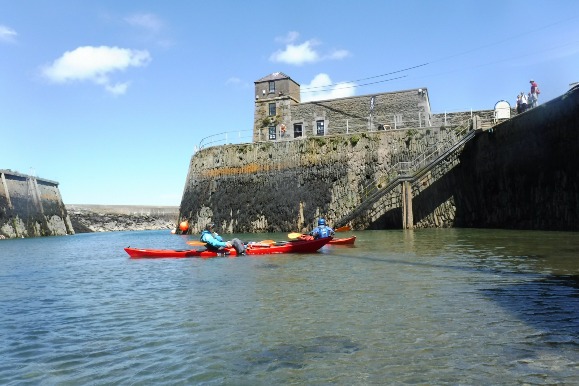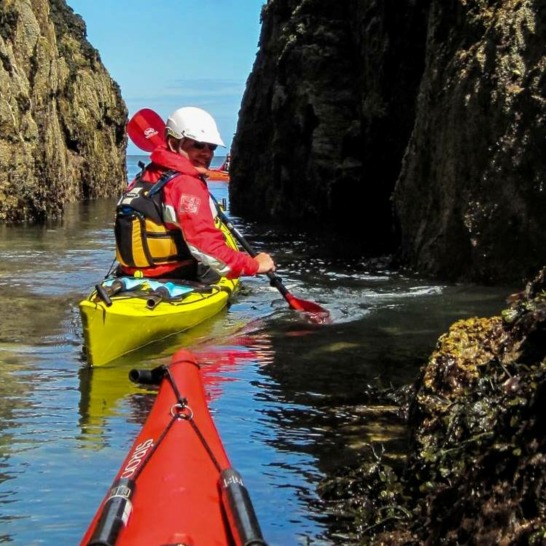Sea kayaking weekend Anglesey June 3rd / 4th 2017
On the Friday we make the long journey to the campsite on Anglesey, paddling this weekend will be Maxine and Sally, Phil Burgess, Martin Stretton and myself, led by Martin and Nikki Aldridge.
On Saturday morning after a weather and tide check, a route for the paddle is chosen, and we head to the get on at Bull Bay near Amlwch on the north coast of the island. Boats are unloaded to the beach and packed ready for departure. We’re briefed by Martin on the trip, Sea kayaking trips are planned to take advantage of wind and tide, so we’ll be heading west on the ebbing tide and once the tide changes around lunchtime we will be able to use the flood tide to assist our return home. We start by getting accustomed to the boats, some have not paddled the sea for a year and for Martin S it is his first time. We find out about use the ‘wrong’ edge to turn (lift right knee to edge the boat to the left to turn to the right) and remembering that there is about 8 feet of boat behind you. We learn about using the boats’ skegs to deal with directional stability in different wind directions.
The coast west towards Porth Wen offers one of the delights of seakayaking: good rock hopping. This is exploring the rocks of the cliffs along the waterline, going into inlets and cave and finding passages through the rocks that sometimes requires careful use of the waves as surge through them. Reverse paddling is an important skill as caves and inlets are always paddled into backwards so that the incoming waves can be watched and exit can be made speedily should it be required.
(Remember this when you are on the lake and your coach is making you paddle backwards for seemingly no reason!)
We swing round Trwynbychan to reach the bay at Porth Wen for a lunch stop. This quite isolated location (footpaths only) and rather surprisingly is dominated by the ruin of a Victorian brick works that made specialist silica bricks for the steel furnaces of the time using local quartizite. These were shipped across the British Empire from the quay at the bay. It’s remarkable location considering how the quay at the bay dries out at low tide and the bay is exposed to bad weather from many directions (Below picture 1 ).
After lunch we continue west round the next headland onto Llanlleiana Head, and as we turn for home, we find that the eastbound flood tide is gaining strength and it carries us effortlessly back. The tidal flow in the sea works. (Below picture 2)
Phil breaks into the flow, the water in the foreground is a large eddy behind the rocky outdrop to Phil’s left the same as the flow of a river and eddies form behind rocky projections. We find one and are able to break into the flow from it It’s just like being on moving water on a river, but in boat twice as long. And so back to Bull Bay and the end of the trip, and we return to the campsite to find that our tents are almost still with us after the days’ gusty wind, and trip possibilities for Sunday are considered. (Below picture 3)
As a good way to motivate for another day on the water Sunday morning dawns grey and blowy with unforecast showers. We breakfast, strike camp and head for the chosen get on, again on the north coast at Llanellian. We drop boats and kit at the beach and part the cars in the car park. It’s good, because although windy,the sun is now shining from a blue sky with scuds of fluffy white clouds. To the right hand side of Porth Ellian the headland of Point Lynas projects out into the sea. We start by rock hopping our way through the features towards its end. Here we can see the overfalls, the choppy sea that is seen from a headland. They are just like rapids in a river, occurring where the tidal flow around the coast is restricted by headland projecting and by the harder rock of that is the headland being a reef under the water. The flow speeds up and standing waves are formed.
Today though our trip is not round the point but westwards so we make an a crossing of Porth Ellian to continue our way along the coast Phil breaks into the flow, the water in the foreground is a large eddy behind the rocky outdrop to Phil’s left towards Amlwch. We’re met by the sight of the abandoned Octel Bromine plant and massive breakwaters standing high above the low tide level of the water. We take care passing two divers in the water and then paddle though the harbour to the beach between high quayside walls and boats standing abandoned by the low tide. In earlier times this harbour had been the shipping point for local mined copper.
After a break for lunch and ice creams we head back on the now easterly flowing flood tide. We arrive back at Porth Ellian for a little more rock hopping, and for Maxine some deep water rescues.
In the two days, two great trips along the rocky north coast that I was pleased to be paddling for the first time to add to the stretches of Anglesey coast I have paddled in the past. Thank you to Nikki and Martin for organising and leading, and to Maxine, Sally, Phil and Martin for their good company over the weekend.
Think you’d enjoy sea kayaking ? HCC runs a beginners’ trip each year, and Nikki and Martin can advise on the paddling skills necessary as a prerequisite.
– Richard Matthews
